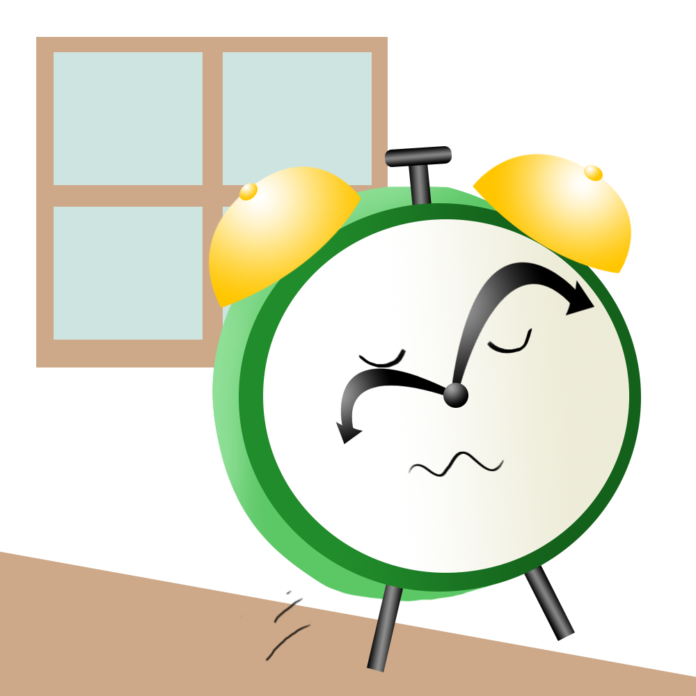You may have noticed that we were robbed of an hour of sleep this weekend. Daylight Saving Time, sometimes known as “spring forward,” seemed especially cruel this year as it fell the Sunday after spring break. It does not have to be this way; two states and several U.S. territories do not observe daylight saving time, and the rest of the country shouldn’t either.
The first U.S. law on Daylight Saving Time went into effect on March 19, 1918, about a year after the United States entered World War I. The law was passed with the intent of saving fuel by utilizing more natural light. Although the official reason for Daylight Saving Time was fuel saving, the U.S. Chamber of Commerce was the major supporter of the policy. People getting off work while it was still light out meant they would be more likely to go out shopping in the evening, thus making more money for the country’s capitalist economy. While this may have been a good idea for the country at the time, we are no longer participating in a world war and certainly do not have any problem spending money with or without daylight, thanks to online shopping.
The combination of lost sleep and loss of natural light can make the road even more dangerous. Research shows that the transition into daylight saving time causes a spike in fatal car crashes every year. One study published last year in the American Economic Journal reports that the change is responsible for more than 30 deaths and $275 million in damage each year. Another earlier study shows the bulk of those accidents occur the Monday following the spring shift, when drivers haven’t gotten used to the sleep loss or light difference yet.
Research presented at the 2016 American Academy of Neurology’s annual meeting found that in Finland strokes increase about eight percent in the two days following both the spring and fall time changes. In the United States, the number of heart attacks spikes about 25 percent the Monday following the spring change, though the Tuesday after the “fall back” time change, there is a 21 percent drop in the number of heart attacks.
Now as we said, it does not have to be this way. Arizona and Hawaii are one step ahead of the game and do not observe daylight saving time.
Most of Arizona hasn’t observed daylight saving time since 1968, when the state legislature opted out of 1966’s Uniform Time Act. Hawaii abandoned the Uniform Time Act a year before Arizona, in 1967, simply because of its relative proximity to the equator, which makes Daylight Saving Time unnecessary. A handful of U.S. territories also don’t observe Daylight Saving Time, including Puerto Rico, Guam, American Samoa and the U.S. Virgin Islands.
States can pass local laws opting out of Daylight Saving Time, and they should, so we can all see the benefits of a consistent sleep and daylight schedule and avoid the harms of drastic changes.






